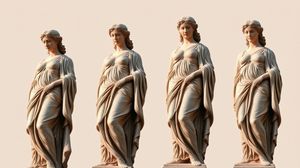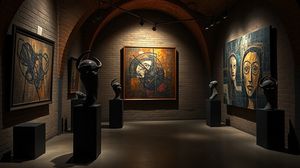
Jeremy Bentham, a renowned philosopher and social reformer, is perhaps best known for his association with University College London (UCL). Bentham passed away in 1832, but his presence endures at UCL in a rather unique way. His auto-icon, a term he coined himself, has been preserved and placed in the North Cloisters of the Wilkins Building, continuing to intrigue and educate visitors and students alike.
Bentham's body was preserved according to his wishes, retaining his skeleton and dressing it in his own clothes. The head, however, was a difficult matter. Originally intended to be part of the display, it didn't preserve well and was replaced with a wax replica. The original head was stored but is no longer on public display. Today, Bentham can be seen seated in a wooden cabinet, almost like he's ready to lecture passersby on utilitarianism.
Despite its eerie reputation, Bentham's auto-icon is not just a peculiar curiosity; it embodies his progressive ideals. He believed in leaving his body to science and public display to inspire rational thought and dispel superstitious fears regarding the dead. This decision reflects his lifelong dedication to the utilitarian approach—striving for the greatest good for the greatest number.
An intriguing anecdote associated with Bentham's preserved figure is that he's famously recorded as "present but not voting" at UCL council meetings. Although more myth than reality, this anecdote highlights Bentham's ongoing symbolic presence and his lasting influence on the institution he helped inspire. His enduring presence at UCL serves as a reminder of his pioneering spirit in education reform.
The auto-icon has fascinated academics, students, and tourists alike, making it a must-see for those visiting UCL. It challenges traditional notions of memorialization and provides an insightful glimpse into the mind of a thinker who was far ahead of his time. Bentham's body continues to spark conversations about philosophy, the ethics of display, and how we connect with historical figures today.

Making the Most of Your Visit:
If you're visiting Jeremy Bentham's auto-icon at UCL, take a moment to walk around the North Cloisters of the Wilkins Building where Bentham resides. The setting adds an atmospheric touch, making the experience more than just a historical curiosity.
While Bentham's auto-icon itself is fascinating, try to dig deeper into his ideas on utilitarianism and social reform before you go. It gives an added layer of meaning to the visit and you'll appreciate his progressive thinking in a new light. Reading a brief overview or watching a short video can make your visit more insightful.
Don't be shy about getting close to the cabinet. While it's certainly peculiar, seeing the detail in how Bentham is presented—specifically his own clothes and the wax head—offers a deeper appreciation for the extent of his contribution to science and education even in death.
If possible, visit during a quieter time of day, like mid-morning on a weekday. The atmosphere is more contemplative without the crowds, allowing you to ponder Bentham's ideas and their impact on modern society.
Lastly, don't miss the amusing legend of Bentham being counted as "present but not voting" at UCL meetings. It's a quirky story that encapsulates the spirit of the man and the continuing influence of his ideas at the university he helped to inspire.

Visiting Times & Costs:
Opening Hours: The display of Jeremy Bentham's auto-icon at UCL is generally open to visitors during UCL's public opening hours, which are typically weekdays from 9am to 5pm. However, these hours can vary during holidays and special events, so it is advisable to check the latest information before visiting.
Cost: Visiting Jeremy Bentham's auto-icon is free of charge.
Accessibility: The North Cloisters and Wilkins Building at UCL are accessible to visitors with mobility impairments, with ramps and elevators available. It is recommended to plan your visit during quieter times for an optimal experience.

Address & Map:

Nearby:























